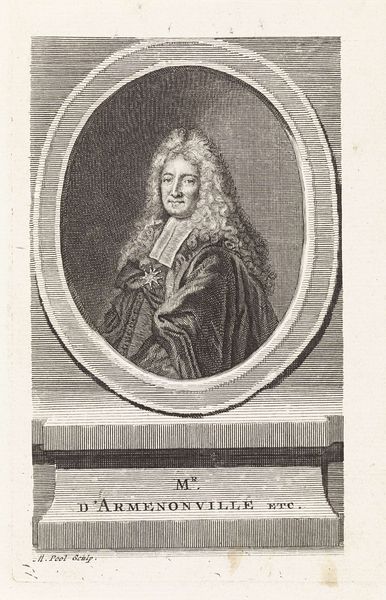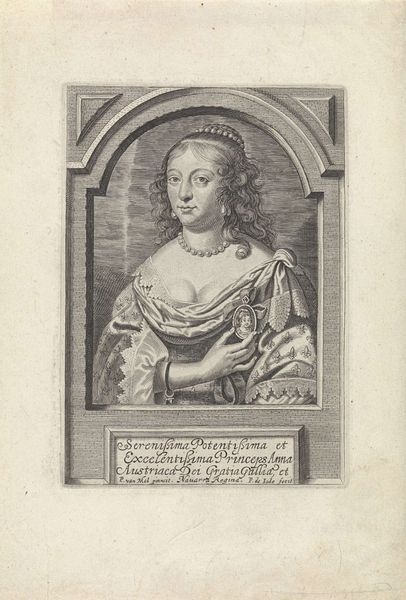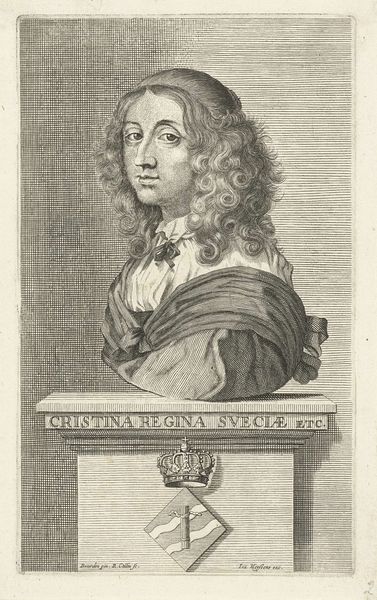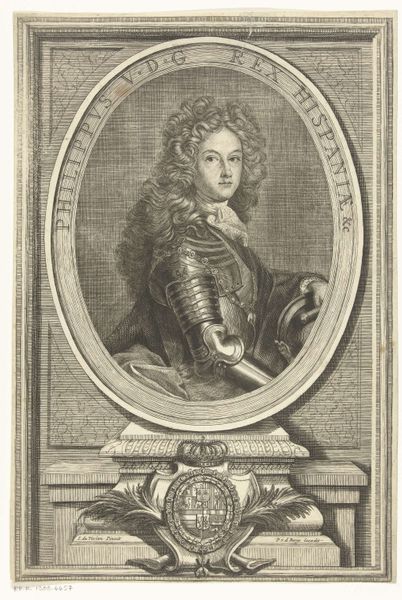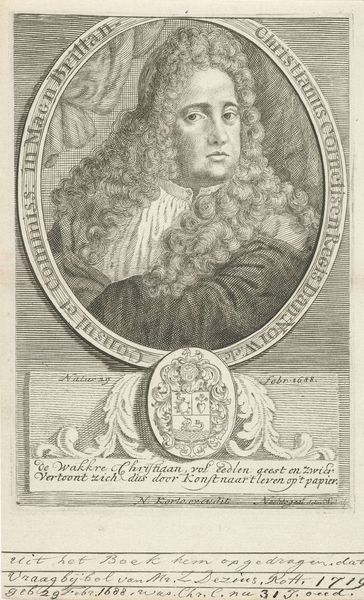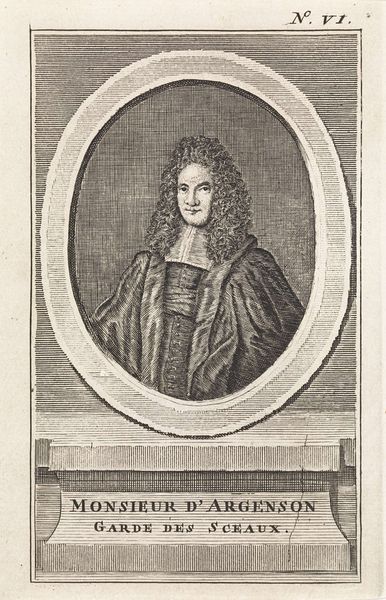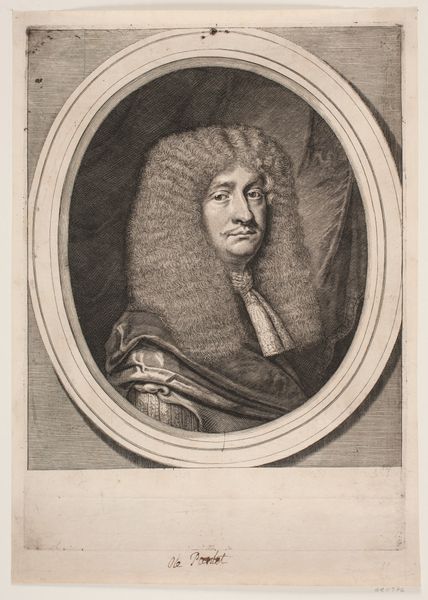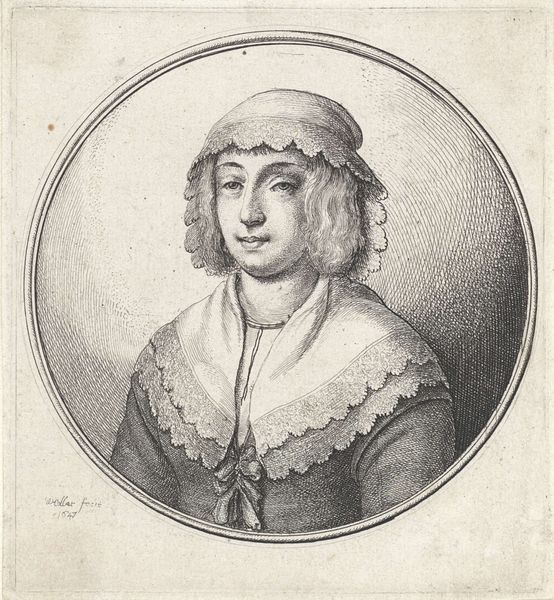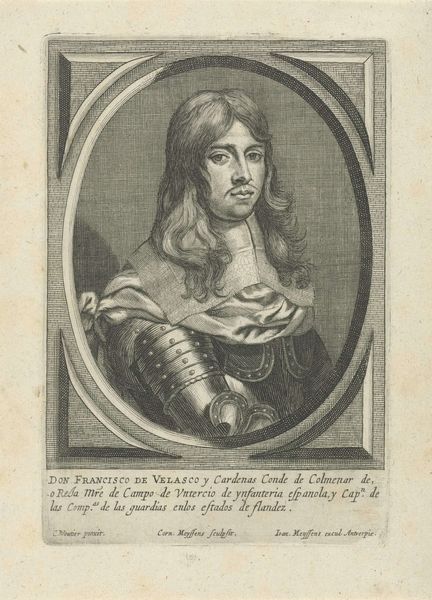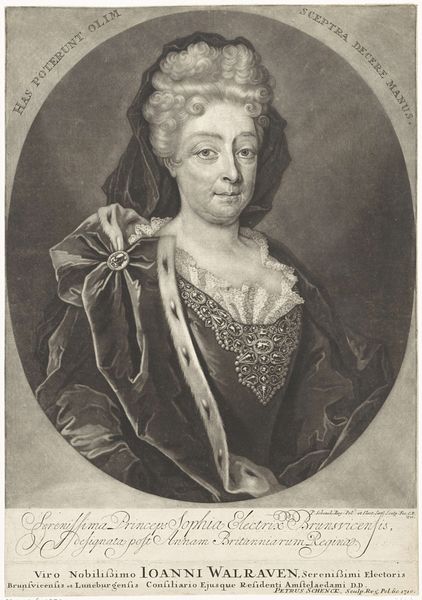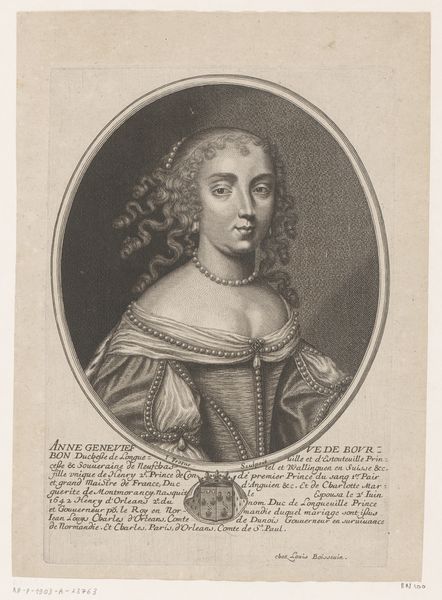
Dimensions: height 75 mm, width 54 mm
Copyright: Rijks Museum: Open Domain
Curator: Immediately, there’s a stark austerity here. It feels like an early daguerreotype but is revealed as an engraving with clean strokes creating light and shadow. What do you make of it? Editor: Indeed. This engraving by Carel Jacob de Huyser, circa 1763-1804, is entitled "Portret van Marie-Jeanne Roland de la Platière." Curator: Platière? So this is a portrait of Madame Roland, a significant figure during the French Revolution. She’s rendered here in a way that reminds me of Roman portrait busts— stoic, despite the delicacy of the engraving. Note the details around the frame. Editor: Absolutely, it is a very evocative image. One is struck by the rendering of this prominent woman intellectual with so many symbolic layers. Observe the gauze headdress. What could that signify? Curator: Its formal arrangement seems less about adornment and more about framing her face, directing our attention to her expression—a complex mix of determination and pensiveness. I must consider that these aesthetic decisions amplify the emotional resonance of the artwork. Editor: Precisely! During the revolution, head coverings denoted political affiliations, philosophical leanings, or personal history. Marie-Jeanne, renowned for her intellect, would certainly use fashion to broadcast symbolic messages and intentions. It reminds us to see beyond mere appearance, seeking meaning imbued within even subtle costume choices. Curator: Interesting that De Huyser decided to set this formal representation of Marie-Jeanne in an oval. He is working with simple visual rhetoric and contrasts, between the circle and the sharp lines of the cross hatching of the engraving. Editor: To ponder her mindset, we see her in this portrait prior to her tragic end during the Reign of Terror in 1793. Her story is told through image and medium. Each viewing is colored by our memory and expectations. Curator: The use of engraving provides an aesthetic sense that carries cultural weight because of its association with historical texts and documentation. We're dealing with art history and the construction of memory. Editor: It’s striking how De Huyser encapsulates the persona of Madame Roland, the layers of personal tragedy and intellect and using culturally legible symbolism to signal power in a revolutionary era. Thank you for drawing my attention to the careful composition. Curator: It’s crucial to acknowledge how aesthetic and social historical narratives intertwine. The symbolic nuances present make experiencing historical objects like this truly invaluable.
Comments
No comments
Be the first to comment and join the conversation on the ultimate creative platform.
